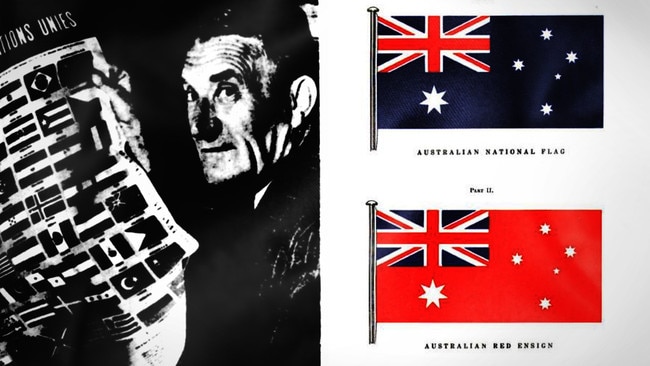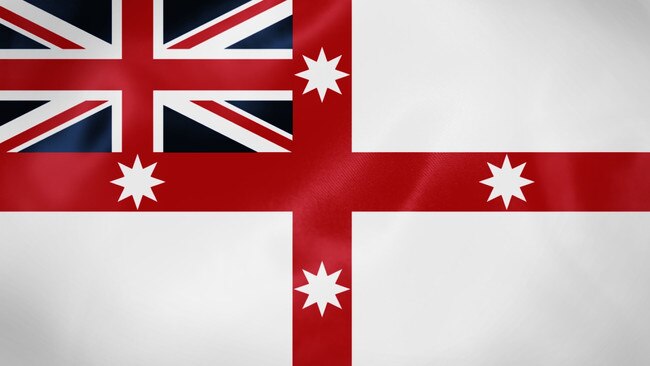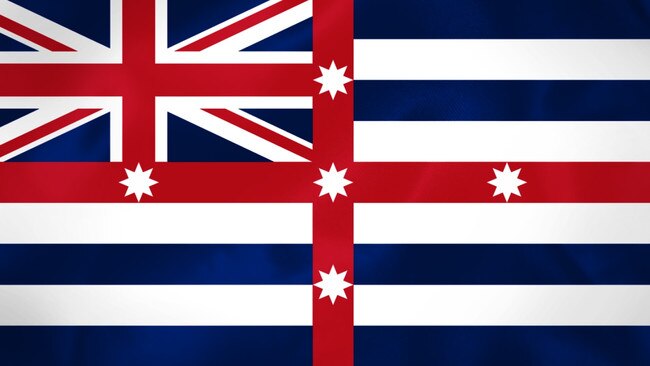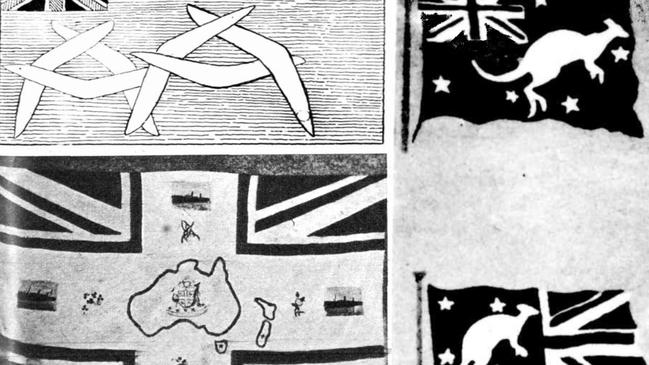A 13-year-old Carlton boy beat more than 32,000 other entries in the 1901 flag design competition
Sketches of animals playing cricket were among the weird and wonderful entries in a national flag design competition, which was ultimately won by a Melbourne schoolboy.

Victoria
Don't miss out on the headlines from Victoria. Followed categories will be added to My News.
In early 1901, 13-year-old Ivor Evans, a resident of Carlton and a student at Princes Hill State School, had a very important letter to post.
It was his entry in the national competition to design the Australian flag.
The new federal government had set out guidelines for what the right flag should include, especially the Union Jack for loyalty to the empire, and the Southern Cross.
The winning entry would not only become the country’s flag; its designer would win 200 pounds.
Ivor’s design had all the right bits, and he had coloured it magnificently in blue and red.
His hopeful letter fell into a sea of other entries.

More than 32,000 designs were submitted from all across the newly federated commonwealth, featuring everything from kangaroos to cricket players and boomerangs.
It was rumoured a design was even entered by an anonymous former governor of a colony.
Perhaps young Ivor carried a flickering lantern of hope that his entry would catch the attention of the judges.
So imagine the boy’s elation when he was told his design had won.
Evans and four others from around the country, who had submitted practically identical drawings, each took 40 pounds of the prize money, and their creation became the earliest official national flag of Australia, approved by King Edward VII.
Ivor was an instant celebrity.
But the blue-ensign-and-stars design that remains the national flag today after being slightly altered, might have ended up looking very different if history had just slightly altered its course.
How the flag could have looked
Prior to federation there were a number of separate attempts to design a national colonial flag.
The first-known design was the National Colonial Flag of Australia, flown about 1824.
It featured the Union Jack on white with the red cross of St George and white stars of the Southern Cross.

Two decades later the Murray River Flag, the origin of which is unknown, became a common feature on Murray River boats from the colonies of South Australia, Victoria and New South Wales.
It was similar to the National Colonial Flag, but featured blue stripes and five stars to represent the five colonies.
Shortly after federation the hunt was on for a permanent flag and a Melbourne newspaper decided to run a competition.
The winning flag was a hodgepodge of stripes and stars and the Union Jack that caused pause for thought.

However, idea of a design competition became so popular that a separate official federal government competition was announced with a considerable cash prize.
Ivor sent in his design alongside truckloads of others.
Plenty of entrants were simply having a laugh, showing animals playing cricket and other jovial scenes.
Kangaroos featured heavily in thousands of the sketches.
But ultimately the judges were looking for simplicity.
The Ivor Evans design they eventually settled upon was later criticised for being almost identical to the Victorian flag, with the key difference being the large star under the Union Jack.
Most newspapers backed the winning design, but the Bulletin magazine called it a “bastard flag” that had “no artistic virtue, no national significance” and symbolised Australia’s lingering and unnecessary reliance on Britain.
Still, the design became official in February 1903 after royal approval.

For many years, sale of the blue version of the Australian flag was restricted to the public because it was reserved for official government use.
The red ensign was considered the public flag, which was often flown alongside the blue ensign.
Both were used by armed forces during the World Wars.
Although the original 1901 design had stars with varying numbers of points, it was later standardised to seven points for each of the stars of the Southern Cross, except for the smallest, which has five.
In 1908 the largest star was changed from six points to seven, with one point for each state and one point to represent the territories.
By 1953 the blue flag was encouraged for use by everyone, including the public, and the red ensign was encouraged for use by merchant sea vessels.
Ivor Evans went on to work in banking, then followed his father in the canvas business.
During WWI they produced hundreds of thousands of canvas items for the Australian armed forces, then in WWII ramped up production again, during which time Ivor Evans leant heavily on his fame as the designer of the Australian flag.
After Evans published a pamphlet about the history of the flag, which focused on Evans as the designer, Prime Minister Robert Menzies was asked to clarify in parliament that the design in fact had five co-designers.
In his later years Evans was a devoted family man, heartbroken by the loss of one of his three sons while fighting in WWII.
Ivor Evans died on Anzac Day in 1960 at his home in Beaumaris.




